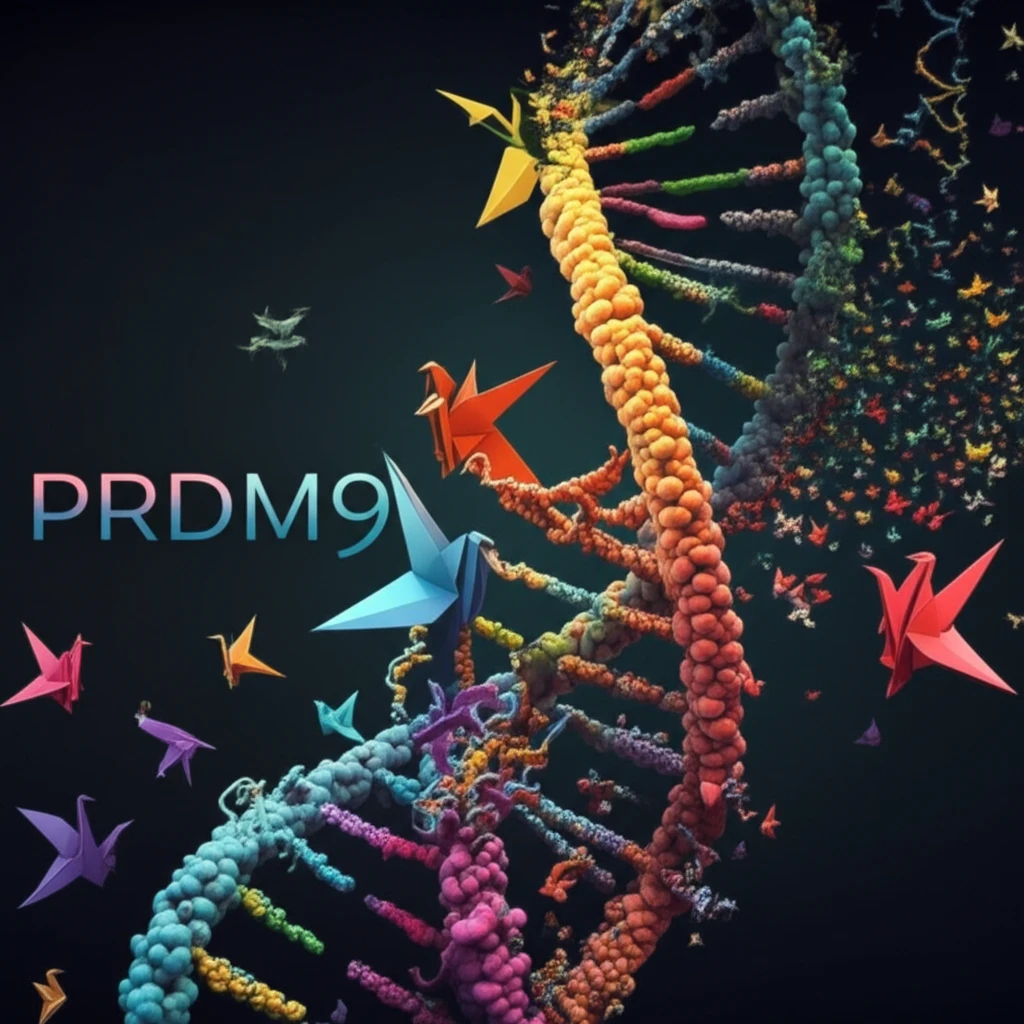
Decoding PRDM9: How Genes Recognize and Adapt to DNA Sequences
"Unraveling the structural secrets behind PRDM9's allele-specific DNA recognition, shedding light on genetic flexibility and conserved binding in human genomes."
In the realm of genetics, PRDM9 stands out as a pivotal mammalian gene, intimately linked to speciation. This protein, known formally as PR/SET domain 9, acts as a master controller of meiotic recombination hotspots. These hotspots are regions on DNA where genetic material is swapped during cell division, a process vital for creating genetic diversity. PRDM9 achieves its role through sequence-specific DNA binding, relying on its tandem array of C2H2 zinc fingers (ZFs). This array is highly variable, differing significantly between species and even within populations, contributing to the uniqueness of individuals.
The human PRDM9 gene presents two common variants: allele A (PRDM9A) and allele C (PRDM9C). PRDM9A, the more prevalent, features 13 zinc fingers (ZF1-13). PRDM9C, prominent among African populations, diverges from PRDM9A through a single amino acid change—arginine to serine (R764S) in ZF9—and by swapping ZF11 with two novel fingers, resulting in a total of 14 fingers. These seemingly minor alterations lead to substantial differences in DNA recognition and binding.
To decipher the structural underpinnings of these differences, researchers have successfully crystallized a fragment of PRDM9C, specifically ZF8-13, in conjunction with an oligonucleotide representing a known PRDM9C-specific hotspot sequence. By comparing this structure to that of a characterized PRDM9A complex, they uncovered three major distinctions that illuminate how PRDM9 alleles flexibly and consistently recognize their target DNA sequences.
Unveiling the Key Structural Differences in PRDM9 Alleles

The team's structural analysis revealed several critical differences between PRDM9A and PRDM9C, each contributing to the unique DNA recognition capabilities of these alleles:
- The R764S Switch: In PRDM9A, arginine at position 764 (Arg-764) in ZF9 recognizes a conserved guanine base. However, in PRDM9C, this arginine is replaced by serine (Ser-764). This substitution allows PRDM9C to accommodate a variable base at this position, increasing its flexibility in DNA binding. This single amino acid change significantly broadens the range of sequences that PRDM9C can recognize.
- The R764S Switch: This change allows PRDM9C to accommodate a variable base, unlike PRDM9A which recognizes a conserved guanine.
- Two-Finger Expansion: The expansion of ZF11 in PRDM9C enables recognition of longer sequences, enhancing binding specificity.
- Arg-Asp Dipeptide Adaptability: This switch permits identical ZF modules to recognize different sequences, adding to the protein’s flexibility.
- Two-Finger Expansion: PRDM9C contains an additional zinc finger, arising from the replacement of ZF11. This expansion allows PRDM9C to interact with three additional base pairs, effectively lengthening the DNA sequence it can recognize. Notably, a tryptophan residue in the additional ZF interacts with a conserved thymine methyl group, further stabilizing the interaction. This structural change enhances the allele’s ability to bind to extended DNA sequences, reinforcing its distinctiveness from PRDM9A.
- Arg-Asp Dipeptide Adaptability: An arginine-aspartate (Arg-Asp) dipeptide, found immediately before the ZF helix, is conserved in two PRDM9A fingers and three PRDM9C fingers. This dipeptide acts as a conformational switch, allowing the protein to adapt to variations between a C:G base pair (G-Arg interaction) and a G:C base pair (C-Asp interaction). This remarkable adaptability enables identical ZF modules to recognize different sequences, greatly enhancing the flexibility of PRDM9.
Implications and Future Directions
These findings shed light on the intricate molecular mechanisms that govern the flexible and conserved binding of human PRDM9 alleles to their cognate DNA sequences. By understanding how PRDM9 adapts to different DNA sequences, scientists can gain insights into the broader implications for genetic diversity and speciation. This research not only enhances our knowledge of PRDM9 but also opens new avenues for exploring the complexities of genome evolution and the mechanisms that drive the formation of new species.
